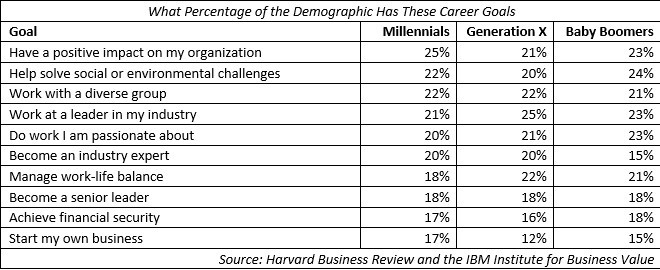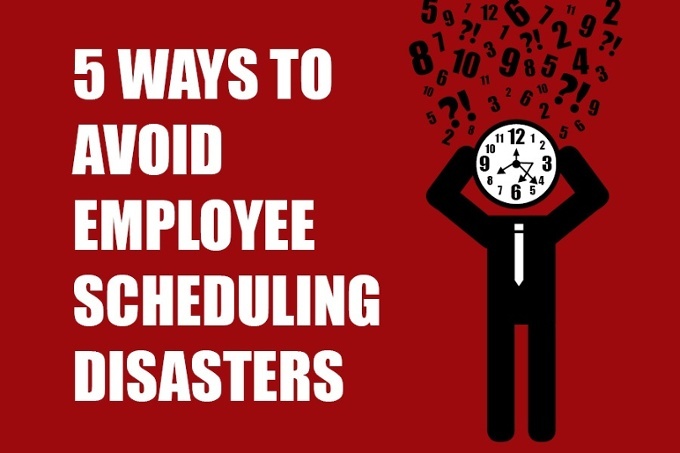It's hard to know how to prevent employee burnout in a way that's best for your organization, but employee happiness is worth trying to the tune of a 12% increase in productivity. That's a major boost to your company's revenues, and it all starts with the team leading your employees.

We all know a good manager can make a very significant difference for your teams, but new reports say that a high-quality manager can account for up to a 70% of variance in employee engagement. The more engaged your team, the less likely they are to burn out and cost your company to spend thousands of dollars to replace and retrain a new staff.
Here are a few tactics for managers to utilize to prevent employee burnout.
1) Set Up Consistent Communication
An excellent employee engagement idea is to increase the level of communication while also improving its quality. There are plenty of tools to help prevent employee burnout, whether it's providing training sessions and meetings or sending a newsletter and memo to give employees a review of their options and role. Communicate about these tools across your internal channels and be sure to give employees a feedback loop, so you can see what's working and what isn't.
Communication is especially important during times of great stress or significant change. It gives you a chance to ease fears and provide a clear path forward for your team, while also giving them a chance to ask questions and seek clarification.

Great managers have more engaged employees. One of the key factors is that they don't wait for annual reviews to discuss important changes or issues. Waiting until an annual review to discuss the needs of your organization can skew your ability to solve problems. You'll be more inclined to focus on the past few months and ignore issues that arose during the first part of your year. You might not be solving issues that are important to your organization, and you could be missing opportunities to discover problems that your employees face.
Learning how to prevent employee burnout and keep them engaged depends on reaching them before problems arise because of something very significant. Waiting until an annual review may make them feel like you're out of touch and unconcerned, so the conversation could feel like lip service instead of a true option to solve issues.
When performance reviews happen more often and overall performance management is strong, employees tend to be more productive contributors. Better managers, in terms of performance management, have employees who are more engaged and struggle less.
2) Recognize and Reward
Employees want to be recognized. More than 58% say it's an important way to keep employees engaged. And companies who use a consistent recognition program are 48% more likely to report high levels of employee engagement.
The best part is that spending just above 1% of your payroll cost on recognition can make your organization 79% more likely to have better company financials.
Recognition shows your employees that they're valuable, and doing so in public or intimate ways can create a culture that rewards good work. Your options can include taking a few minutes during a meeting to thank an exemplary employee, or shooting an email at the end of the week with a personal note to thank someone who performed well or helped you out.
You can use recognition as the basis for almost any employee engagement idea. For example, if you plan to bring donuts on Friday, tell employees you provided them because your team is doing a stellar job.
Remember that not all recognition is positive. If someone isn't doing their best or is starting to burn out, let that person know you're aware. How you handle it and the solution you provide can help remedy the issue.
If you've found someone who isn't doing well but you think they're a valuable asset, it's time to invest in training or set goals they can reasonably accomplish to help them get back on track. Tell the person you're aware they're struggling. A quick meeting to determine the help they need can provide a big boost to their satisfaction level and encourage them to stay and provide a positive financial benefit to your organization. Let your staff know your plan to help.

3) Complete Random Acts of Kindness and Have Fun
Give your team a treat simply for being your team. It can help them build comradery and will cultivate a positive working environment. Being kind and encouraging when your team is struggling is another smart way to prevent employee burnout. It will help you create a trusting environment where they feel understood. It will also increase the likelihood that they'll come to you when there's a problem. Public acknowledgment and encouragement are a top morale booster.
4) Create More Breaks
Have employees work less to keep them more engaged. Encourage a healthy balance between work and personal time. Take proactive steps to give employees quiet moments or breaks, so they can catch their breath and have a little personal time.
Aim to give your employees organized breaks throughout their workday. Organize walks, expand lunch hours on certain days or allow your staff to take an extra 15 minutes to help you create a healthy work environment.
Employees need to know that no repercussions come with taking breaks, which requires an existing level of trust and clarity.

5) Learn Your Workforce's True Desires
One key to preventing employee burnout is to truly understand your employees. It's easier for a magazine or article to grab your attention by highlighting perceived differences between groups of workers, but proper research continues to show that almost every workforce has the same view on key work attributes and career goals.
In April of 2016, Millennials overtook Baby Boomers as the largest generation in America, and they're also the largest block in the American workforce. You've probably focused many of your efforts on targeting Millennials and reaching their expectations and desires.
Millennials tend to have higher debt due to education, and they're spending a greater percentage of their salaries on basic living items due to somewhat stagnant wages. The recession hit as many of them were finishing school or beginning their careers, but what they care about in the workplace aligns with other generations when you look at longitudinal, in-depth research.
According to the Harvard Business Review, Millennials line up with other generations when it comes to long-term career goals:

Fewer Millennials prioritize the work-life balance, compared to Generation X and Baby Boomers, which cuts against much of the common thought on the group.
Don't build a plan that addresses your workforce without asking them what they truly want. You might determine that your staff prefers a few minutes during the weekly meeting to highlight team members, or they really like a gift card to Starbucks and an extra break to go use it on Fridays.
If you want to know how to keep employees engaged, start by asking them what they'd like you to do for them and what they'd like you to do for their coworkers.

6) Give Them What They Want and Need
Figuring out how to keep employees engaged involves more than determining how they want to be praised at the end of the day. Your job also includes discovering what's missing and potentially causing stress.
Review your team's responsibilities and goals. It's likely that someone doesn't have - or know how to access - the tools, training or other support needed to accomplish their goals. During your conversations with employees, take time to question them, ensuring that there's no consequence to asking for what they need. You might find that a simple training session or showing someone how to access and use a tool can solve a lot of their stress.
If you find that many employees are unaware of the tools or feel they need additional training, it's likely that your full workforce could benefit from a retraining session. You might be able to improve overall operational efficiencies and effectiveness by addressing everyone.
7) Understanding Their Time
Are your employees putting in too much time on periphery tasks without investing adequate time to their main objectives? Are they stressed because paperwork is cutting into their sales opportunities? Is time a problem?
Employees have a limited amount of time. If you see them not using it wisely and getting stuck in other tasks not related to their core responsibilities, they're probably frustrated with the situation.
At Orbital Shift, we've seen customers improve their operational efficiency and employee satisfaction levels simply by tracking how employees spend their day. It creates a roadmap for management to follow, so they can improve scheduling, move employees to best accomplish tasks and adjust shifts to balance skills.
Tracking time is the best way to uncover problems in your overall process management flow and see if your employees are getting stuck or wasting time. When you use this tactic to focus on tasks that your team doesn't enjoy, they'll be happier when you're able to accomplish tasks faster and more effectively.
Properly managing time is a great way to ensure your employees' happiness and discover how value can improve your operations.
8) Learn the Warning Signs
Some of your efforts may fall flat with a few workers, so you'll need to step up your game to encourage them if they're an asset to your team. Prevent employee burnout by learning what it looks like and creating a unique employee engagement idea for them.
Here are a few of the biggest warning signs of employee burnout:
- Disengagement
Stress that's mounting to burnout often pushes employees away from coworkers and their work. If someone looks like they're past the point of caring, take them aside and see if you can discover the cause.
- Absenteeism
Is a worker taking more sick days? Chronic stress can keep people in bed. Rest doesn't solve the issue, so it doesn't provide much relief.
- Accidents
When an employee isn't engaged and they're starting to burn out, you may see more accidents and mistakes at work. For some employees, this can go unnoticed if work isn't reviewed often. In other scenarios, like those working with heavy machinery or driving, accidents can be extremely harmful to your business and your employees.
- Exhaustion
A warning sign that pops up before absenteeism and may precede accidents is an overall look of exhaustion. This can include physically looking ill or having dark bags under their eyes, or you may notice it as a shift in their grooming habits. Exhausted employees are also more forgetful, may appear tired throughout the day and even start the day looking drained.
- Very sensitive to criticism
If someone starts taking daily criticism of work as a personal attack, you may need to look for employee engagement ideas quickly. Increased sensitivity might mean an employee is feeling more pressure, is under significant stress or isn't the right fit for your team.
Knowing the common warning signs of pending employee burnout is a good starting point for noticing potential problems. Look for significant changes in your team to help catch problems before they become irreparable.
Orbital Shift can help you watch for these warning signs by tracking employee time and integrating task data with each employee's experience during your next meeting or review. It's time to learn about your options and see how you can keep employees engaged.


